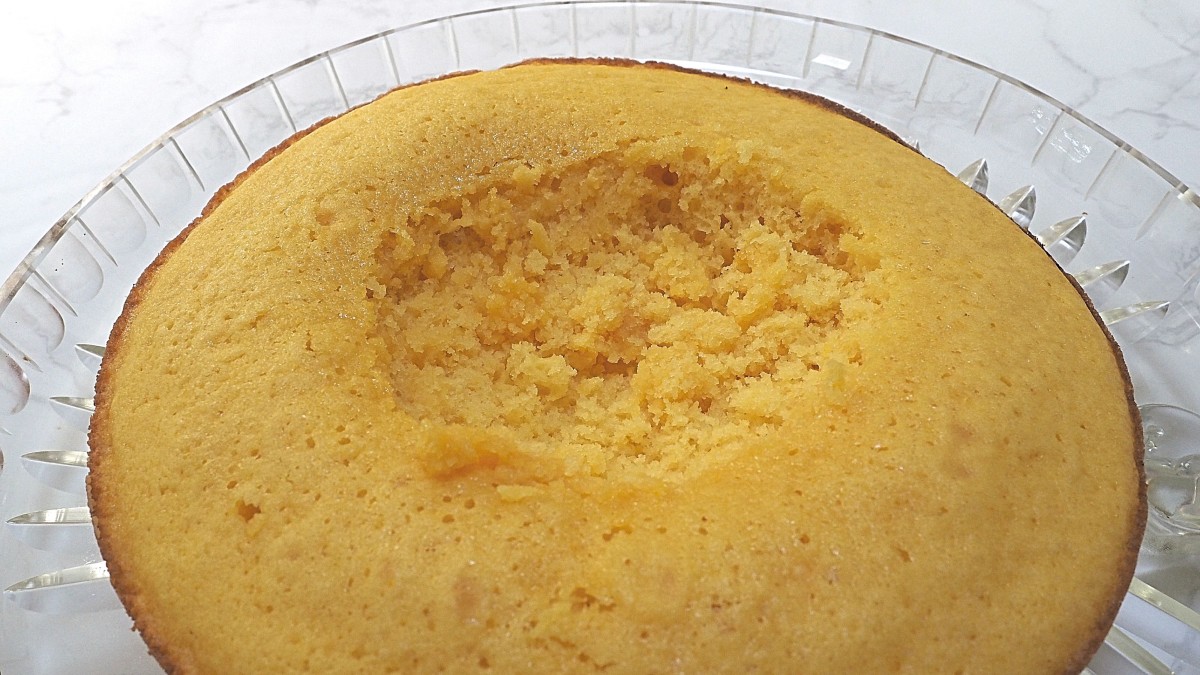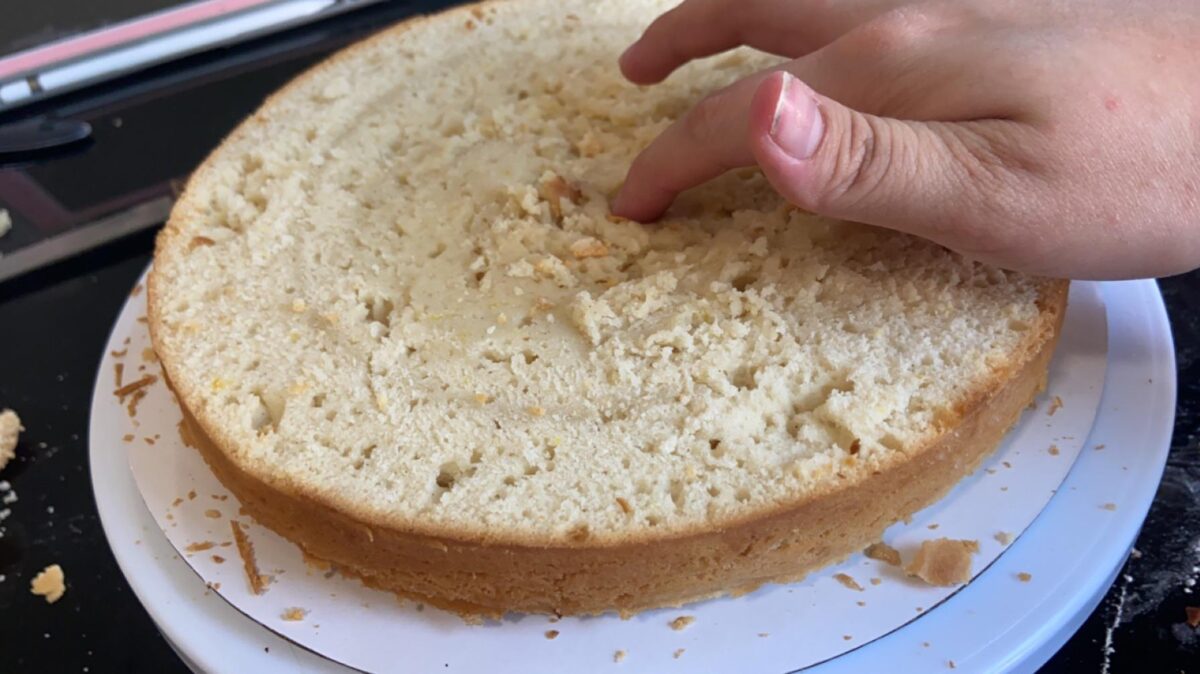We’ve all been there—after hours of mixing, measuring, and baking, you pull out a cake only to find it’s undercooked in the middle. It can feel like a total disaster, but don’t fret!
I’ve got your back with some tried-and-true tips to rescue that cake and save your baking day.
How To Fix An Undercooked Cake
Correcting an undercooked cake is straightforward with the right approach. Follow these steps to ensure a delicious outcome.
- Return the Cake to the Oven
Place the undercooked cake back in a preheated oven at 350°F. Monitor the cake closely. Check it every 5 to 10 minutes. Aim for a baking time of 10 to 20 additional minutes. - Cover with Foil
If the top of the cake browns too quickly, cover it lightly with aluminum foil. This method prevents burning while allowing the interior to bake thoroughly. - Use a Toothpick Test
Insert a toothpick into the center of the cake. Remove it; if it comes out clean or with a few moist crumbs, the cake is done. If batter clings to the toothpick, it requires more time. - Slice and Bake
For deeper cakes, cut the undercooked cake in half horizontally. Place each half on a baking sheet. Bake again for 10 to 15 minutes. This method improves heat circulation and cooks the inside thoroughly. - Make Cake Pops
For a creative alternative, crumble the undercooked cake into a bowl. Combine with frosting and form into balls. Dip in chocolate and refrigerate until set. This method transforms the mishap into a delightful treat. - Serve with Sauce
If there’s only a slight undercooked section, consider serving the cake with warm sauce. Options like chocolate, caramel, or fruit sauces enhance the flavor.
Implementing these strategies efficiently salvages an undercooked cake while ensuring a tasty result.
Understanding Undercooked Cakes
Recognizing common causes and signs can help prevent this issue effectively.
Common Causes of Undercooking
- Incorrect Oven Temperature: An oven that runs cooler than the set temperature leads to insufficient cooking. Use an oven thermometer for accuracy.
- Insufficient Baking Time: Opening the oven door too often or removing the cake prematurely interrupts the baking process.
- Overcrowded Oven: Placing multiple items in the oven can impede heat circulation, causing uneven cooking.
- Improper Pan Size: Using a pan that’s too small or too deep affects heat distribution. Always select the appropriate pan size for the recipe.
- Wet Batter: Adding too much liquid or not allowing ingredients to reach room temperature can create a batter that doesn’t set properly.
- Wet Center: When inserting a toothpick returns with wet batter, the cake requires more time in the oven.
- Unstable Structure: If the cake collapses or wobbles excessively when moved, it’s likely undercooked.
- Lack of Golden Crust: A pale, soft top may indicate the cake hasn’t fully baked.
- Sticky Edges: If the edges stick to the pan upon removal, this suggests underbaking.
- Raw Dough Taste: Tasting the center reveals a gooey or uncooked flavor, signaling the cake needs additional baking.
How To Fix Undercooked Cake

Addressing an undercooked cake comes down to identifying the specific issue. Different approaches apply depending on where the problem lies.
How To Fix An All Over Cake Undercooking
For a cake that is undercooked in all areas, the solution is straightforward. This situation typically involves a cake that resembles batter more than a baked dessert. To fix it, simply return the cake to a preheated oven. Depending on the level of undercooking, the baking time required may range from two to fifteen minutes. Monitor the cake closely to avoid overbaking.
How To Fix An Undercooked Cake Middle
If the center of your cake remains undercooked, this problem occurs frequently among bakers. Cover the top of the cake with aluminum foil to prevent burning. Place the cake back into the oven for ten to fifteen minutes. Checking for doneness with a toothpick in the center of the cake helps gauge progress.
How To Fix An Undercooked Cake Base
For cakes that are cooked on the top but remain moist at the bottom, the fix is slightly more complex. Ensure that the cake sits in the center of the oven and cover the top with aluminum foil to avoid burning. If your oven features upper and lower heat controls, disable the upper setting to minimize risk. This method enhances the cooking of the base without compromising the top.
Troubleshooting Common Issues
Addressing undercooked cakes effectively involves understanding common pitfalls and adjustments. Here are specific solutions to frequently encountered problems.
Cake Still Undercooked After Fix
Return the cake to the oven. If an undercooked cake persists even though following previous recommendations, placing it back into a preheated oven remains essential. bake for an additional five to ten minutes. Check the doneness again. Use a toothpick inserted in the center; if it comes out clean or with a few crumbs, the cake is fully baked.
Over-compensating and Drying Out the Cake
Monitor baking time closely. In efforts to correct undercooking, overbaking can lead to a dry cake. Reduce the baking duration slightly. When checking for doneness, take the cake out at the minimum suggested time to avoid moisture loss. Consider adding simple syrup. If dryness occurs, brushing a light layer of simple syrup on the surface can restore moisture and enhance flavor.
My Final Thoughts On Fixing An Undercooked Cake
Baking can be unpredictable and dealing with an undercooked cake can be frustrating. But it’s important to remember there are practical solutions to rescue your creation. Whether you choose to return the cake to the oven or get creative with alternatives like cake pops you’ll find a way to turn things around.
Understanding the causes of undercooking can help you avoid these mishaps in the future. With the right techniques and a bit of patience you can ensure your cakes come out perfectly baked every time. Don’t let an undercooked cake ruin your baking experience; embrace the challenge and enjoy the process. Happy baking!
Frequently Asked Questions
What should I do if my cake is undercooked?
If your cake is undercooked, return it to a preheated oven for 2 to 15 minutes. You can also cover the top with aluminum foil to prevent over-browning while it continues to bake.
How can I tell if my cake is undercooked?
Signs of an undercooked cake include a wet center, sticky edges, an unstable structure, and a lack of a golden crust. A chewy raw dough taste is also a clear indication.
What causes cakes to be undercooked?
Common causes of undercooked cakes include incorrect oven temperature, insufficient baking time, overcrowded ovens, using the wrong pan size, and a wet batter.
How do I prevent my cake from being undercooked?
To prevent undercooking, ensure your oven is properly calibrated, avoid overcrowding, use the right pan size, and monitor baking time closely.
Can I fix a cake that is cooked on top but moist at the bottom?
Yes, for cakes that are cooked on top but moist below, center the cake in the oven, cover it with foil, and disable the upper heat setting, if available.
What can I do with an undercooked cake?
You can salvage an undercooked cake by returning it to the oven or creatively transforming it into cake pops or serving it with a warm sauce for added flavor.
How can I restore moisture to a dry cake?
To restore moisture to a dry cake, brush a light layer of simple syrup on its surface. This will add moisture and improve the cake’s texture.

